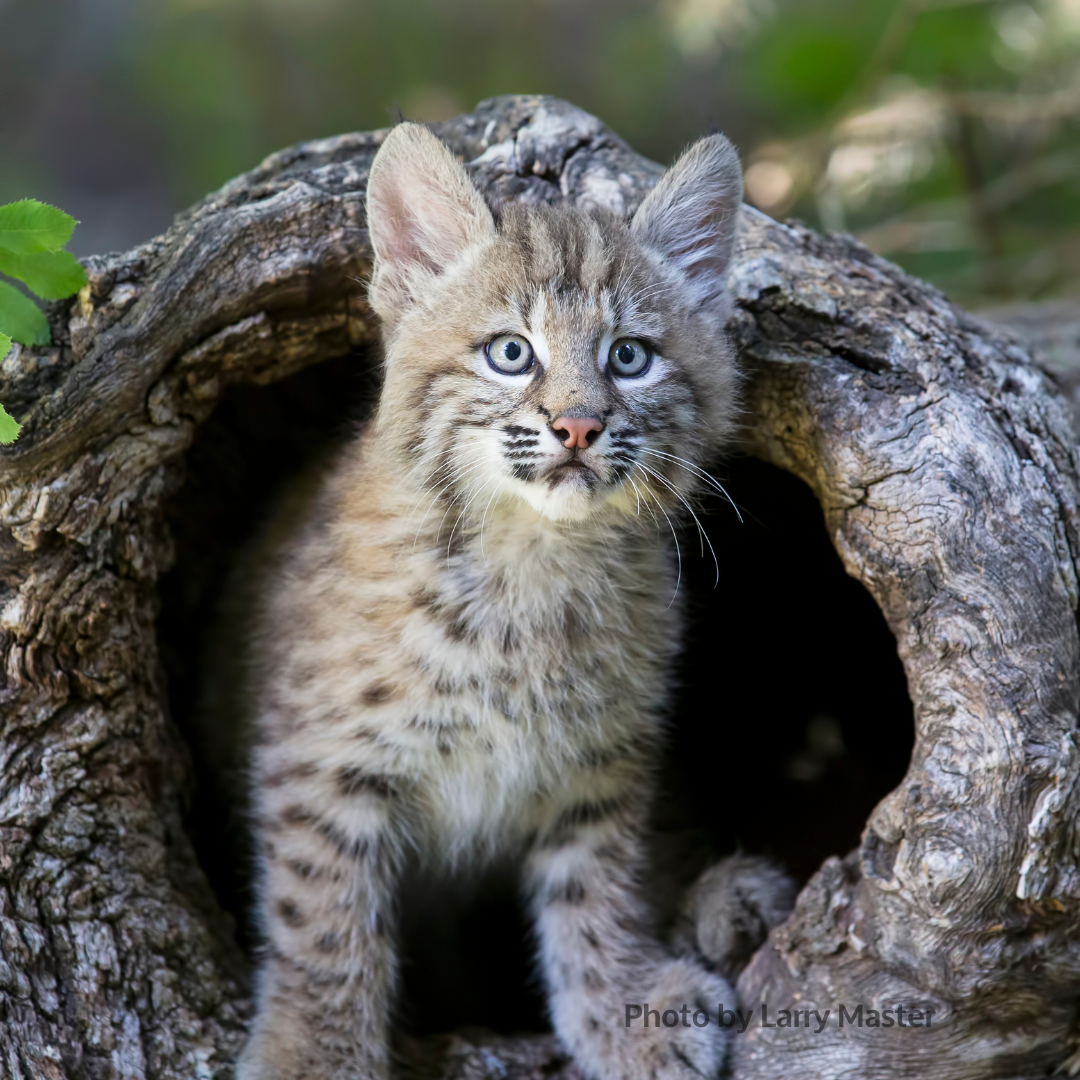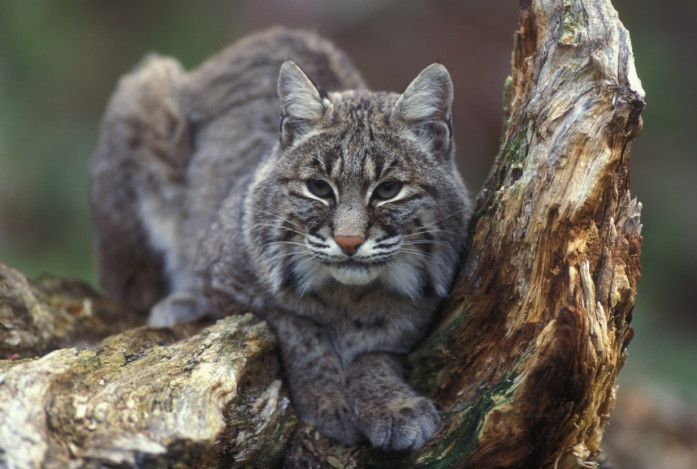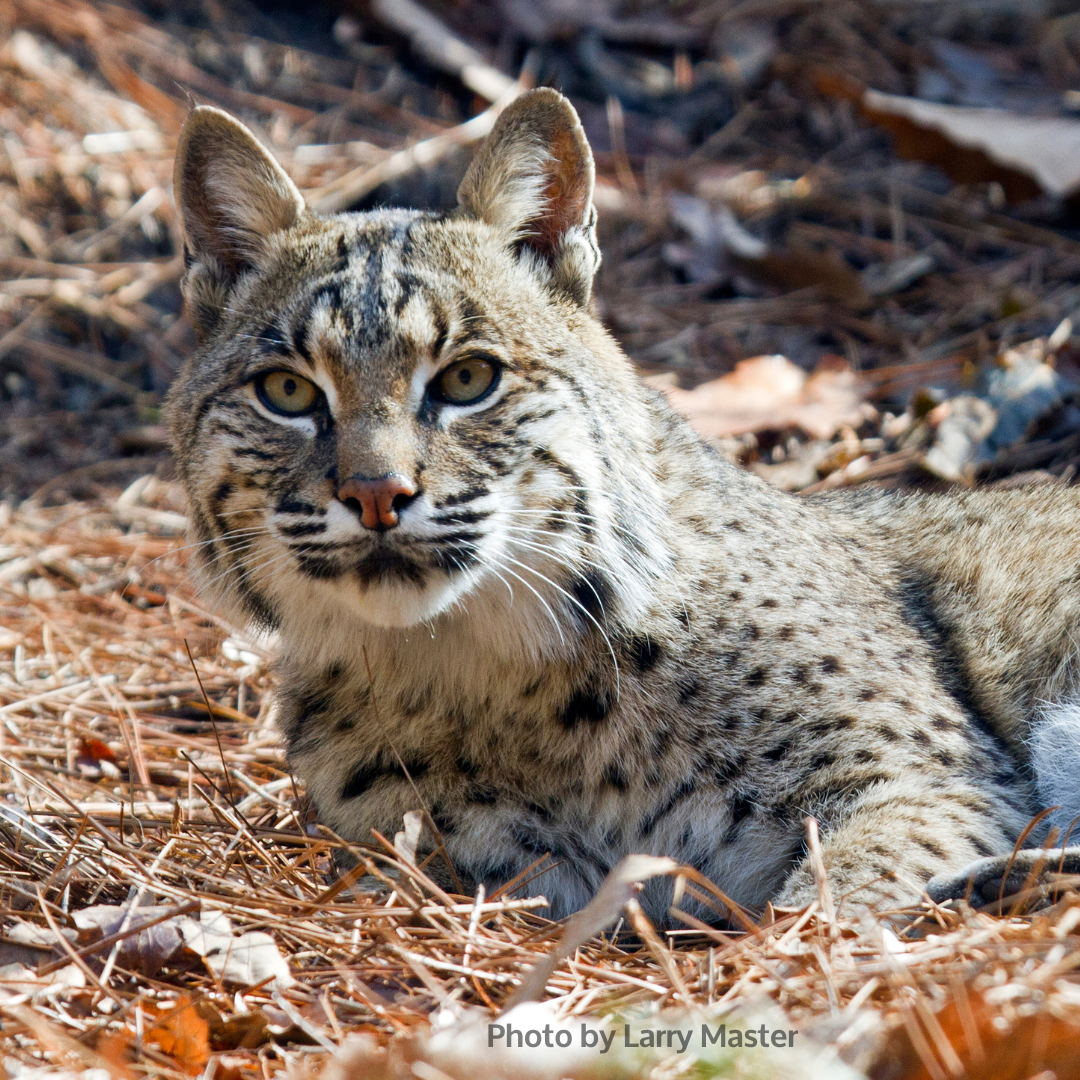
Let Bobcats Manage Themselves
By John Davis - Rewilding Advocate
Thursday, February 22, 2024
Our Northern Forest region is, or at least should be, home to three native wild cats: Puma (Puma concolor; also known as Cougar, Panther and Mountain Lion – all the same great cat), Lynx (Lynx canadensis), and Bobcat (Lynx rufus). Unfortunately, early Euro-Americans, through hunting, trapping, and habitat destruction, eliminated the cougar and lynx from most of our region. They also greatly reduced bobcat populations. Fortunately, with the reforestation – the rewilding—of most of our region, bobcats have rebounded nicely, to the point that most states have hunting and trapping seasons on this opportunistic but ecologically vital, mid-size cat.
 Bobcats, like other carnivores, play vital roles in natural ecosystems, helping hold in check numbers of smaller animals. Bobcats prey especially on rodents and rabbits. Likely with the great rebound in wild turkeys – another rewilding success story – bobcats are also learning to take these hefty birds. More commonly, though, bobcats eat the rodents who carry the ticks who give us Lyme disease and other spreading maladies, so we should see them as helpful neighbors indeed.
Bobcats, like other carnivores, play vital roles in natural ecosystems, helping hold in check numbers of smaller animals. Bobcats prey especially on rodents and rabbits. Likely with the great rebound in wild turkeys – another rewilding success story – bobcats are also learning to take these hefty birds. More commonly, though, bobcats eat the rodents who carry the ticks who give us Lyme disease and other spreading maladies, so we should see them as helpful neighbors indeed.
Thoughtful wildlife managers will admit that their job is not so much managing wildlife – which has been taking good care of itself for millions of years—but managing people’s interaction with and exploitation of wildlife. Carnivores, particularly, tend to self-regulate and are unlikely to multiply beyond the carrying capacity of their ecosystems unless people have somehow upset natural dynamics.
 Nor do many people depend on hunting or trapping of carnivores these days. Historically, many Adirondack families depended on pelts from trapping or meat from hunting for their livelihoods. This is less and less common, though; and where hunting or trapping is for subsistence, it is generally hunting of tasty and meaty ungulates, like deer, and large ground birds, like turkeys and grouse.
Nor do many people depend on hunting or trapping of carnivores these days. Historically, many Adirondack families depended on pelts from trapping or meat from hunting for their livelihoods. This is less and less common, though; and where hunting or trapping is for subsistence, it is generally hunting of tasty and meaty ungulates, like deer, and large ground birds, like turkeys and grouse.
So, the reasons why state wildlife agencies allow – and indeed encourage – hunting and trapping of native carnivores are not ecological or even economic. Rather they are political and recreational. For historic reasons beyond the scope of this blog, state wildlife management mainly serves sporting and extractive users, who can have disproportionate political influence on how our wildlife is treated.
Nonetheless, because so few people actually wish to kill carnivores, bobcats are thriving in large portions of New York and much of the country these days, after nearly being eliminated a century or so ago. Numerically, the DEC’s killing season on bobcats is probably sustainable for now. Bobcats can breed throughout the year, but they tend to raise their young in spring and summer, whereas the legal killing season on them is in autumn and early winter. Ecologically and ethically, nonetheless, the killing season should be questioned, especially when mothers with kittens are shot or trapped.
 The four-month killing season on bobcats is up for consideration again. Last time the New York Department of Environmental Conservation invited input on when bobcats could be hunted or trapped, most people urged the DEC to shorten and more strictly limit the periods when bobcat could be “taken.” Instead, the DEC ignored public comments and lengthened the killing season on bobcats.
The four-month killing season on bobcats is up for consideration again. Last time the New York Department of Environmental Conservation invited input on when bobcats could be hunted or trapped, most people urged the DEC to shorten and more strictly limit the periods when bobcat could be “taken.” Instead, the DEC ignored public comments and lengthened the killing season on bobcats.
Still, the Adirondack Council believes in the power of the combined voice; and we believe that if enough of us speak out often enough, even the most recalcitrant government institutions eventually must heed our calls. We all must speak out on behalf of our wild neighbors so that science, not political will, leads the way. Please let the DEC know that you like bobcats living out their natural, ecologically vital roles and urge the department to more strictly limit the shooting and trapping of these beautiful wild cats.
Looking for more ways to get involved with the Council?




